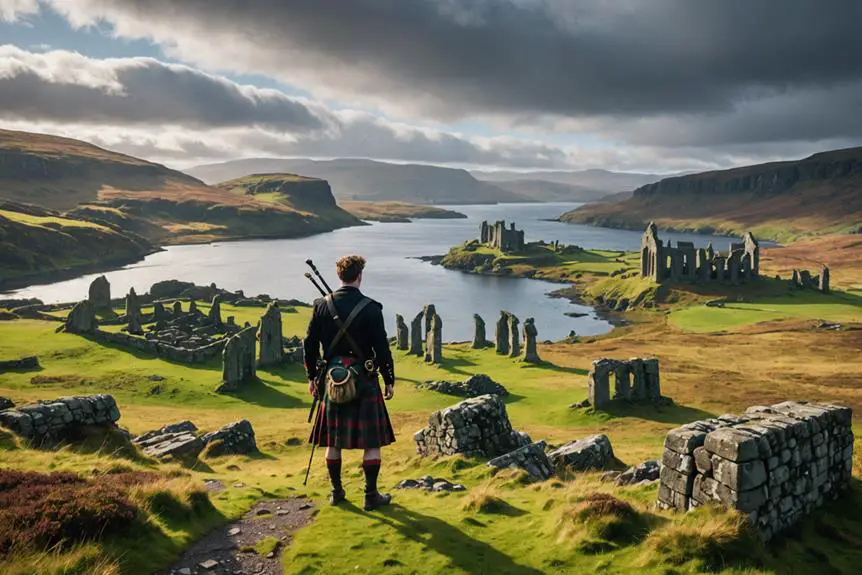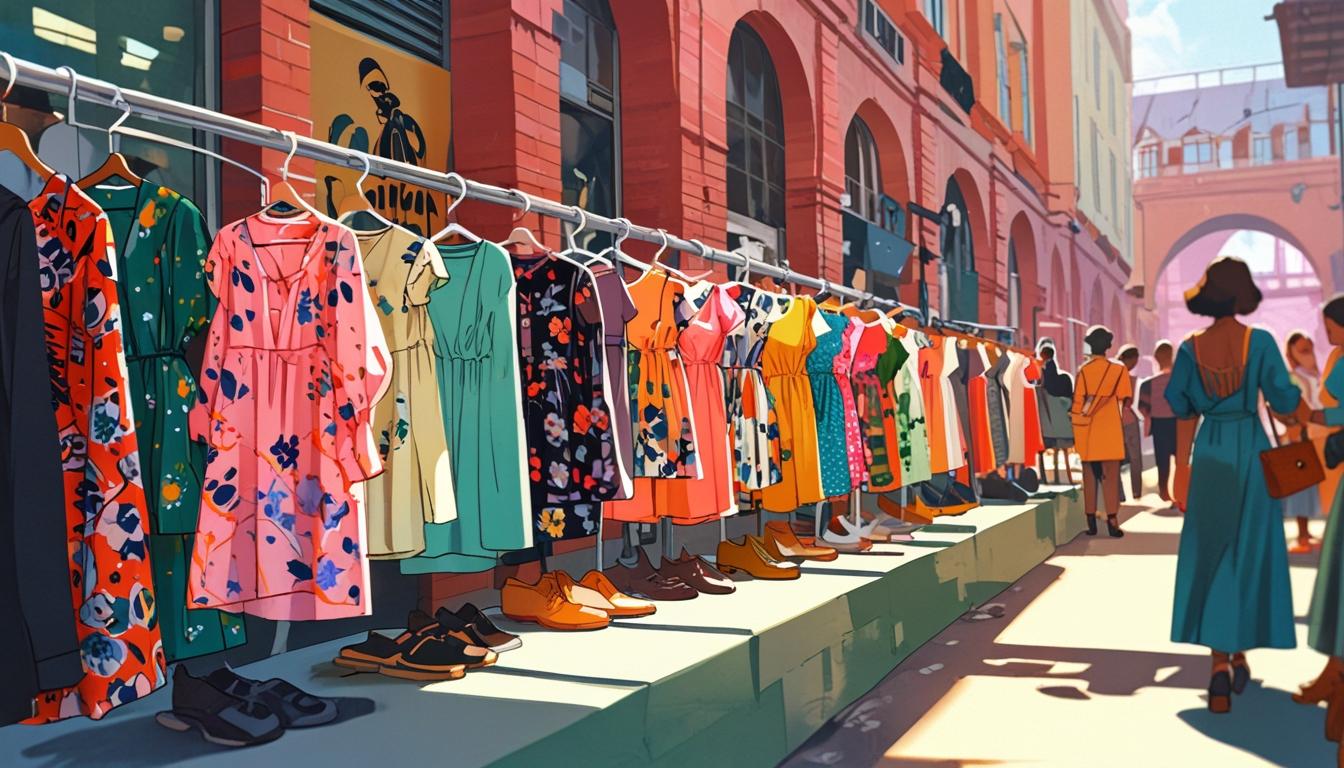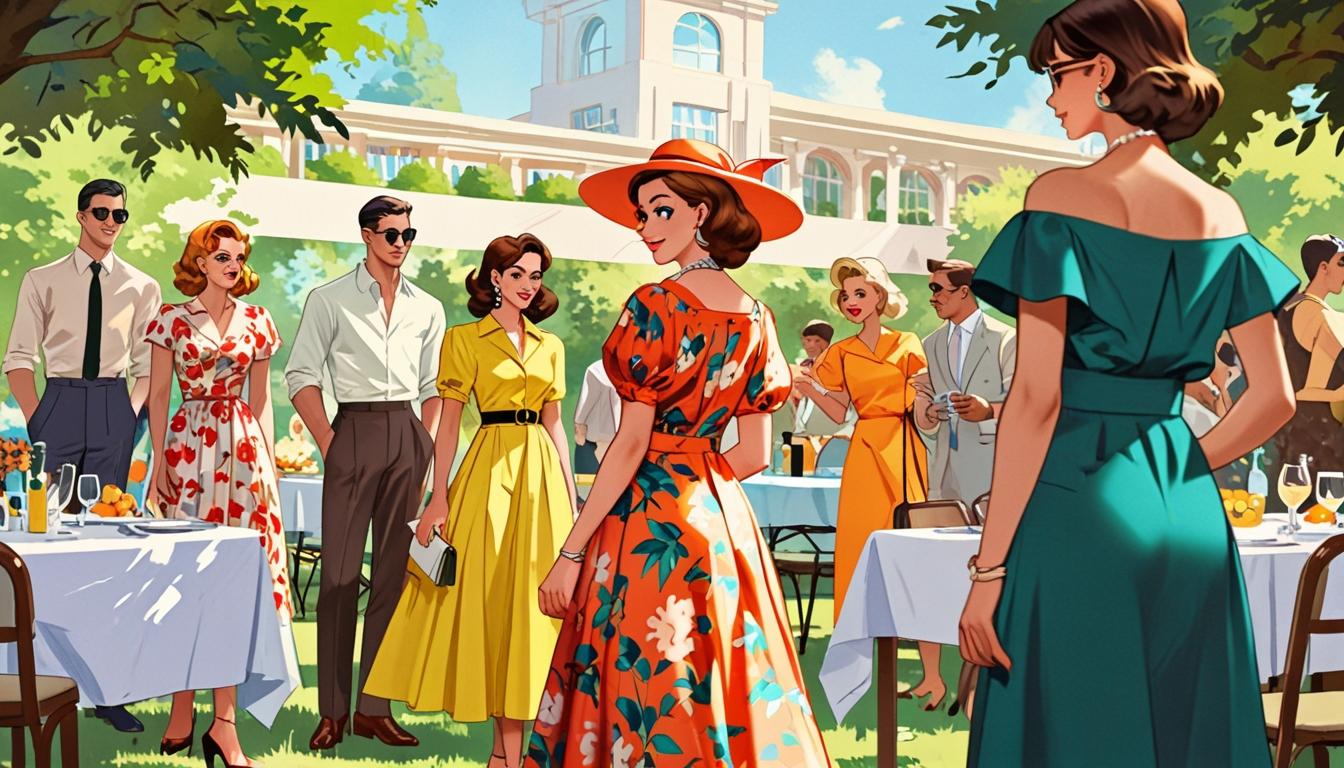The kilt, a garment steeped in both tradition and transformation, contrasts sharply with modern fashion trends. You might think of it purely as a symbol of Scottish pride, but its history reveals a complex narrative shaped by social, military, and cultural changes. From the imposing Great Kilt to the more practical Small Kilt, each variation tells a story of adaptation and resilience. What led to its fluctuating popularity, especially after the Dress Act of 1746? Exploring these intricacies uncovers far more than just fabric and pleats.
Historical Origins of the Kilt
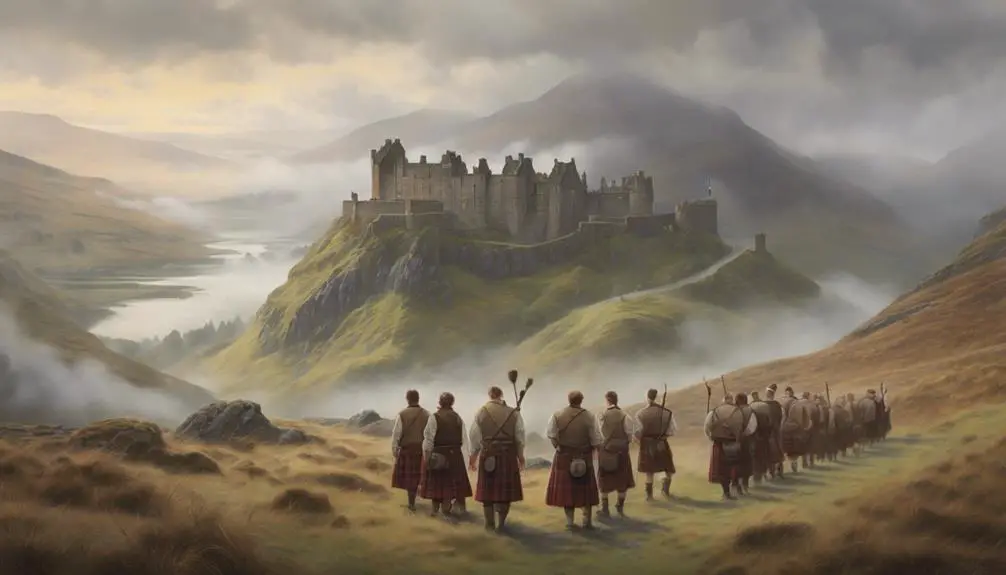
Although the kilt has become a symbol of Scottish identity, its historical origins trace back to the 16th century with the emergence of the "feileadh mor," or Great Kilt. This early form of the kilt was made from a large piece of fabric, often up to seven yards long, which served multiple purposes, including acting as a blanket. As time progressed, the shift to the "feileadh beag," or Small Kilt, took place in the late 17th to early 18th century. This adaptation became particularly popular among Highland regiments, paving the way for its adoption in civilian life.
In the 1720s, Thomas Rawlinson modernized the kilt's design by incorporating sewn-in pleats, enhancing both its practicality and comfort. However, the kilt faced challenges during the Dress Act of 1746, which temporarily banned Highland dress, including the kilt, as part of the efforts to suppress Scottish culture following the Jacobite Uprising. Fortunately, when the ban was lifted in 1782, the kilt experienced a remarkable resurgence.
Historical depictions, including Scottish coats of arms from the 17th century, provide evidence of kilt use and demonstrate how this iconic garment evolved, distinguishing itself from other forms of Highland dress. Today, with its vibrant tartan patterns and deep-rooted significance, the kilt remains a cherished emblem of Scottish heritage, embodying the spirit and resilience of a culture that celebrates its past while looking toward the future.
The Great Kilt and Its Significance
The Great Kilt, or "breacan an fhéilidh," stands as a powerful symbol of Scottish identity, emerging in the 16th century and showcasing the ingenuity of Highland culture. This impressive garment, made from a large piece of fabric—often up to seven yards long and 54 to 60 inches wide—reflects the versatility and practicality that Highlanders required in their daily lives. You'd find that the Great Kilt could serve multiple functions, acting not just as clothing but also as a blanket during chilly evenings.
Traditionally, the Great Kilt was belted at the waist, allowing you to drape it over your shoulder for added protection against the unpredictable weather of the Scottish Highlands. This design encapsulated the spirit of Highland life, where adaptability was key. The evolution of this iconic garment eventually led to the modern small kilt, thanks to Thomas Rawlinson's introduction of pleats in the 18th century, which enhanced comfort and fit.
Worn during formal occasions, festivals, and historical reenactments, the Great Kilt symbolizes not only Scottish heritage but also a deep connection to the traditions and stories of the Highland people. Its bold patterns and craftsmanship serve as a reflection of the rich cultural identity of Scotland. So, whether you're attending a wedding or a Highland Games event, donning the Great Kilt is a way to celebrate and honor the enduring legacy of Scottish culture.
The Emergence of the Small Kilt

Many people might not realize that the small kilt, or "fèileadh beag," emerged as a practical solution to the challenges posed by the cumbersome great kilt. This transformation took place in the late 17th or early 18th century, primarily driven by the need for a more functional uniform. By 1746, the small kilt gained popularity across the Highlands and northern Lowlands, particularly among Highland regiments in the British Army, who found it much easier to wear for daily activities.
The innovation of the small kilt is credited to Thomas Rawlinson, who introduced the concept in the 1720s. His design featured sewn-in pleats, which enhanced mobility while maintaining the kilt's essential character. The earliest known example of the small kilt, preserved by the Scottish Tartans Authority, dates back to around 1796, showcasing its early civilian usage.
The small kilt's rise was also influenced by the repeal of the Dress Act in 1782, a law that had suppressed Highland dress following the Jacobite Uprising of 1745. This change allowed Scots to embrace their heritage and wear the small kilt proudly, marking a significant cultural shift. With its ease of wear and stylish appeal, the small kilt quickly became a staple of Highland dress, symbolizing both tradition and practicality. It's a reflection of how fashion can evolve to meet the needs of everyday life while still honoring deep-rooted customs.
Military Influence on Kilt Design
Military influence on kilt design played a significant role in shaping its modern form and function. The adoption of the small kilt by Highland regiments in the 18th century, particularly the 42nd Regiment of Foot, known as the Black Watch, established a standardized kilt uniform that became synonymous with military service. This design not only provided protection against harsh weather but also allowed for ease of movement, a essential factor for soldiers on the battlefield.
The history of the kilt took a dramatic turn following the Dress Act of 1746, which banned Highland dress. However, the repeal in 1782 led to a resurgence of kilt-wearing among military units, and these regiments embraced the kilt as a powerful symbol of Scottish identity. During World War I, kilts became iconic as Scottish units wore them into combat, leading to their playful nickname, "Devils in Skirts."
Today, kilts remain a significant part of modern Scottish military uniforms. Active regiments, like the Royal Regiment of Scotland, proudly don kilts in ceremonial and formal settings, preserving the traditional design that connects them to their storied past. This military influence has not just shaped the kilt's design; it's also woven a rich tapestry of history and identity that continues to resonate. So, when you see a kilt on a soldier, remember it's more than just a piece of clothing; it's a reflection of courage, heritage, and the enduring spirit of the Scottish people.
Cultural Symbolism and Identity
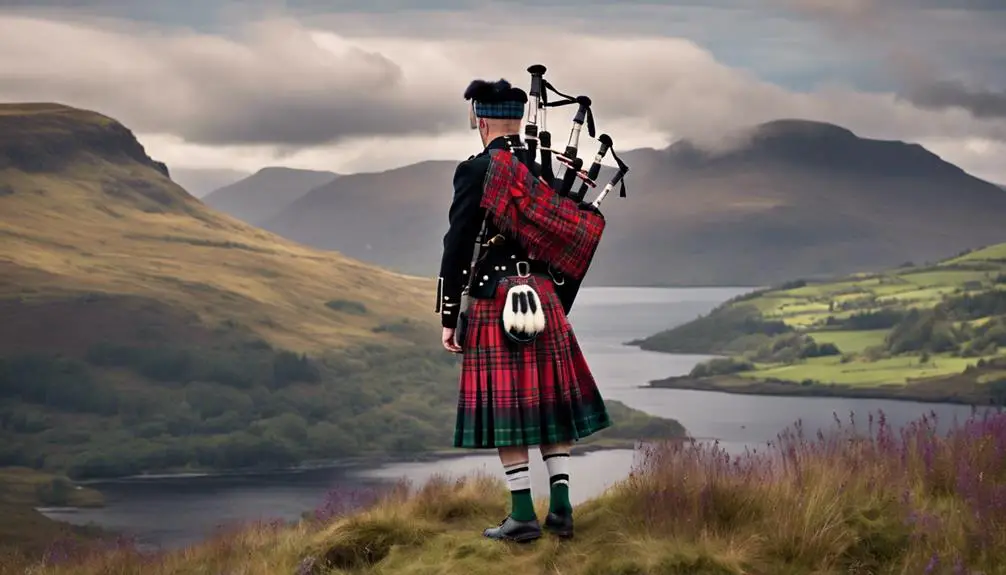
While you might see kilts as just a garment, they embody deep cultural symbolism and identity for the Scottish people. The kilt, often adorned with unique tartan patterns, represents distinct clans and their histories. With over 7,000 registered tartans, each one captures the essence of Scottish heritage, tying wearers to their familial and regional roots. Historically, the kilt has stood as a beacon of resilience, especially after the repeal of the Dress Act in 1782, which had sought to suppress Highland traditions.
Today, the kilt is recognized as the national dress of Scotland, celebrated during formal occasions like weddings and graduations. These events highlight not only Scottish pride but also the ongoing cultural continuity that kilts symbolize. As you attend Highland games or festivals, you'll notice that the kilt serves as more than just clothing; it connects you to a rich tapestry of history and tradition.
Interestingly, the kilt has transcended its Scottish origins, becoming a broader Celtic identity symbol embraced by various groups worldwide. This evolution reinforces its status as an emblem of Scottish pride and cultural identity. So, whether you're donning a kilt for a special event or simply appreciating its significance, you're participating in a vibrant celebration of heritage and tradition that spans generations. The kilt truly encapsulates the spirit of Scotland, making it a cherished symbol of both personal and national identity.
Debates on Kilt Invention
The history of the kilt's invention sparks lively debates among historians and enthusiasts alike. Many point to Thomas Rawlinson as the innovator who created the small kilt in the 1720s, sewing in pleats for practicality during factory work. However, this narrative isn't universally accepted. Some scholars argue that the small kilt developed from earlier forms of Highland dress, particularly the belted plaid worn as far back as the late 1500s. This evolution complicates the story, suggesting a collective cultural journey rather than a singular invention.
Illustrations and descriptions from the 17th century indicate that variations of shorter kilts were already in use, muddying the waters of attribution. The distinction between the Great Kilt (feileadh mor) and the small kilt (feileadh beag) became more defined with the rise of Highland regiments in the 18th century. The military adoption of the small kilt contributed considerably to its popularization, embedding it further into the fabric of Scottish culture.
As you explore these debates, consider how they reflect broader themes of cultural identity and the romanticization of Highland dress. The repeal of the Dress Act in 1782 shifted perceptions, allowing kilt-wearing to flourish as a symbol of Scottish pride. In this light, the debates surrounding the kilt's invention reveal much more than just a clothing item; they investigate the heart of Scottish heritage and the ongoing quest to define cultural identity through fashion.
Contemporary Kilt Fashion Trends
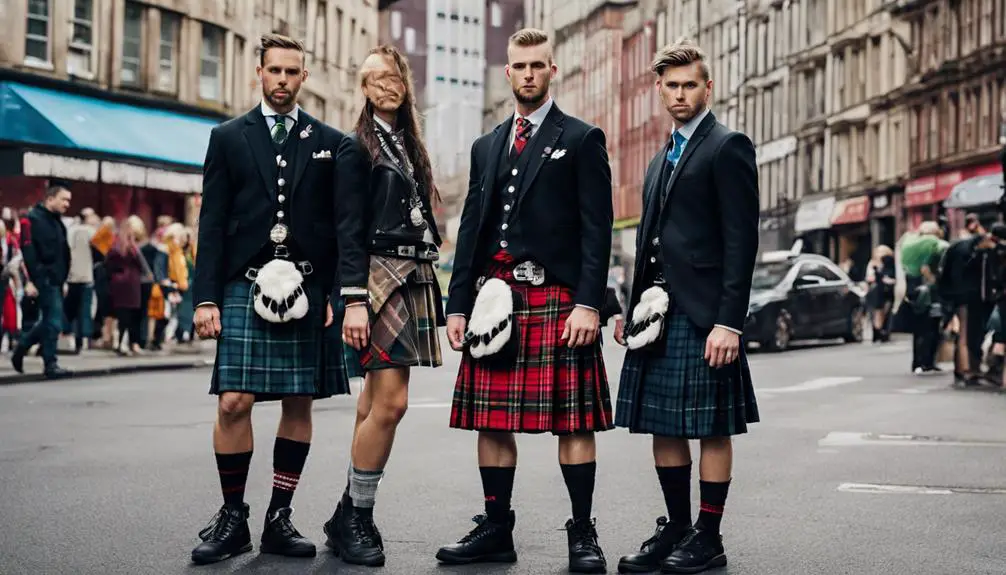
Contemporary kilt fashion has evolved considerably, with many young Scotsmen embracing casual styles that pair kilts with T-shirts and sneakers. This fresh approach redefines the garment's cultural significance, making kilts a staple for everyday wear rather than just formal occasions. The rise of hybrid kilts showcases innovative designs that incorporate non-traditional fabrics, appealing to a diverse audience and promoting versatility in your wardrobe.
Women's kilts are also gaining traction, often designed as fashionable skirts, which reflects a broader acceptance of kilt styles across genders. This shift in contemporary fashion emphasizes how kilts can fit various lifestyles and personal expressions. Modern materials like cotton and synthetic blends have gained popularity, providing you with comfortable options without sacrificing traditional kilt aesthetics.
Customization has become a key feature in kilt-making, transforming it into a bespoke craft. You can now select specific measurements and patterns tailored to your preferences, enhancing the garment's contemporary appeal while preserving its roots in Scottish national identity. As you explore these trends, you'll appreciate how kilts have adapted to modern sensibilities while celebrating their rich heritage.
Frequently Asked Questions
Who Invented the Kilt and Why?
You'll find kilt origins blend practicality with cultural significance. Fabric choices evolved alongside historical evolution, showcasing craftsmanship techniques. Modern adaptations reflect societal perceptions, while regional variations highlight gender representation and ceremonial uses in Scottish identity.
Why Did the Scottish Wear Kilts?
Imagine a tapestry of history wrapped around you. Scots wear kilts for cultural significance, embracing traditional attire, fashion evolution, and regional variations, while modern adaptations highlight ceremonial uses, textile choices, and historical symbolism, bridging gender perceptions and kilt manufacturing.
Why Did the Irish Start Wearing Kilts?
You'll find that the Irish began wearing kilts to embrace their culture, influenced by Gaelic traditions. With regional variations and modern adaptations, these garments symbolize heritage, featuring unique fabric choices for social occasions and gender differences.
Are Kilts More Scottish or Irish?
Kilts are more tied to Scottish heritage, showcasing cultural symbolism through fabric choices and historical significance. While Irish traditions exist, modern adaptations highlight regional variations, gender associations, and influences at sporting events and fashion.
